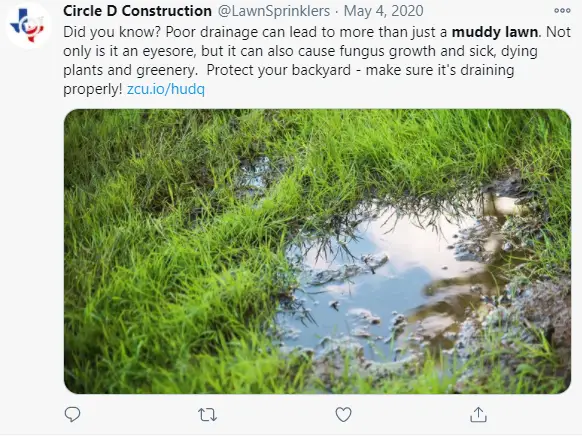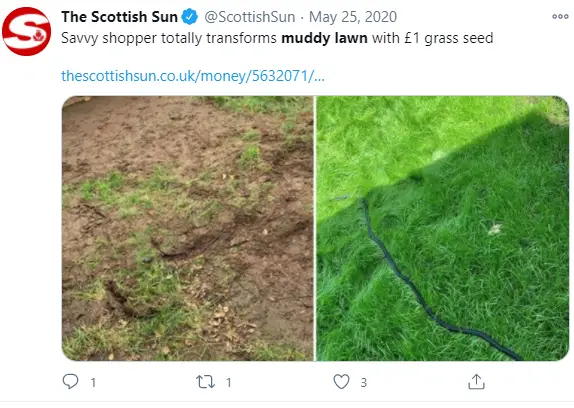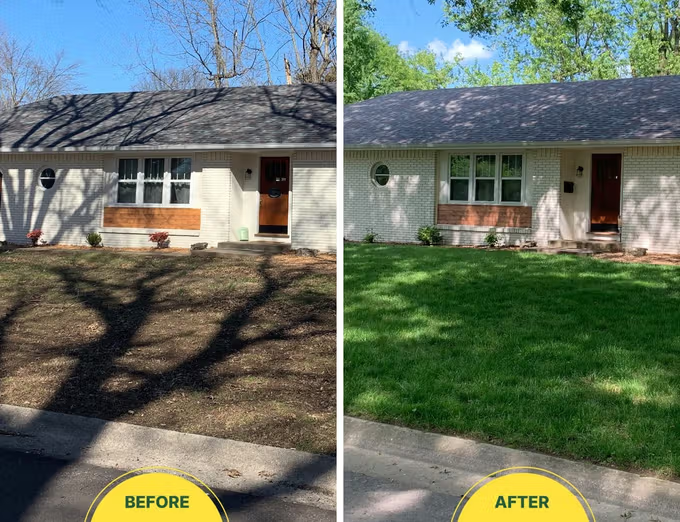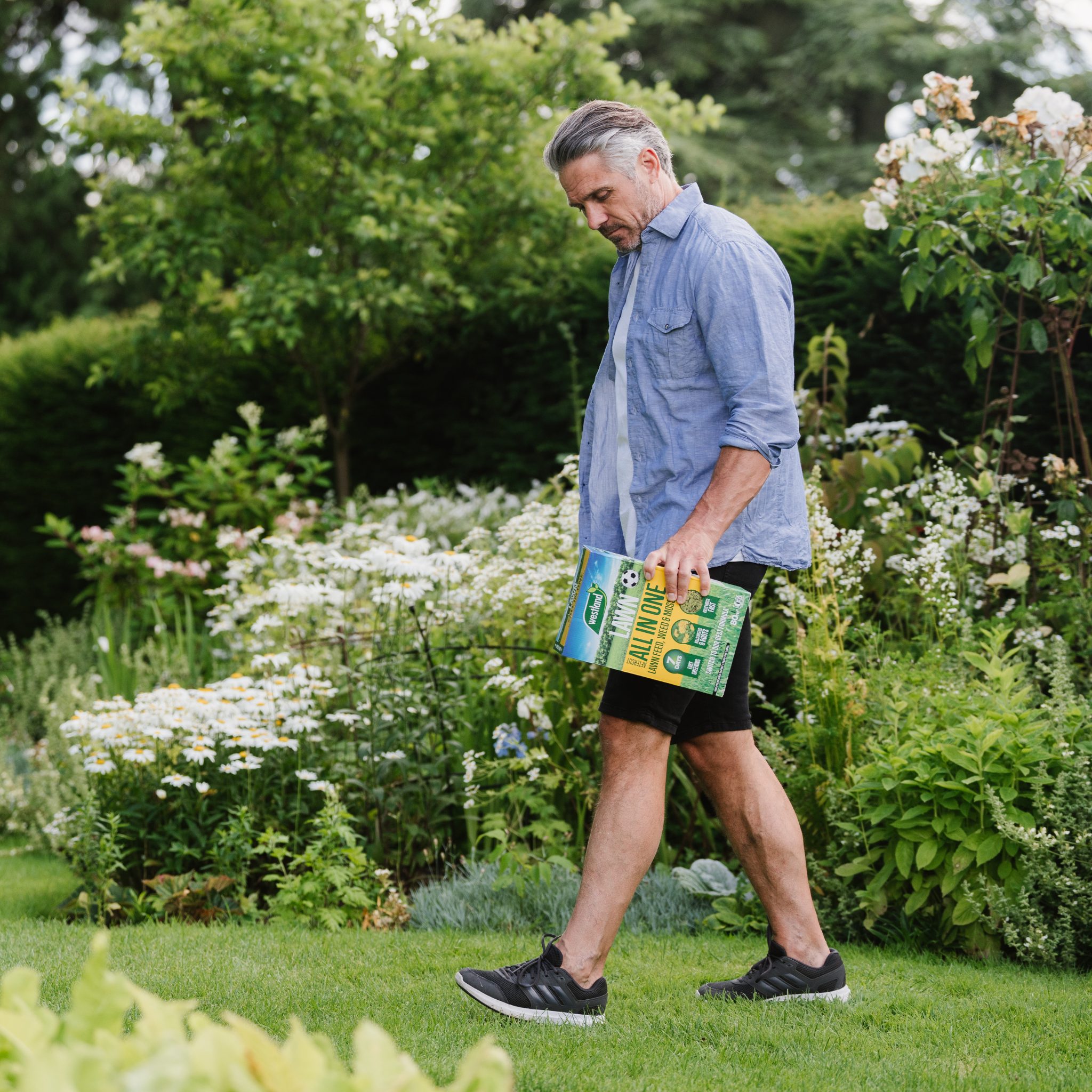How To Fix A Muddy Lawn
Last Updated on January 5, 2021 by Duncan
Imagine this. You move to your new house and you can’t hide your excitement—you are over the moon.
Then it rains. And this is when you notice the lawn: it’s super muddy and has thick dead grass.
You feel down and all the excitement is gone. Is this what you were looking forward to?
As a responsible homeowner and someone that values a green healthy lawn, this can be frustrating.
Should you completely replace the lawn or there are ways you can repair it? You wonder.
If you are in this predicament, you are in the luck, as there are several things you can do. Here are tips on how to fix a muddy lawn.
First things first
The first thing you should do is to find out why your ground is getting muddy. Some possible reasons include:
Poor drainage

This is the most common cause of a muddy lawn. To diagnose the issue, wait until the next time it rains and look at the water leaving your downspouts. Where does it go?
Does it flow into the drainage pipe that carries water away from the lawn or does it spill out over the grass creating a muddy area?
If the rain runoff is ruining your yard, check whether the ends of the downspouts extend at least 6 feet from your foundation.
If possible, direct the downspouts towards a pond, ditch, or other low-lying areas of the lawn.
If your lawn is completely flat or there is a dip, water will collect there instead of draining properly.
The collected water will turn the soil into the mud and inhibit your grass from growing healthily.
To fix this, you need to re-grade your lawn so it slopes at least 2% or ¼ inch per foot away from the house.
The easiest way to re-grade your lawn is to take the topsoil from the lower side of the lawn and apply it to the upper side to create a slope.
You also should fill any dips that might be present.
Grass growing in an overly shaded area
If there are thick trees growing around your yard, you are bound to have a muddy lawn as the sun doesn’t reach the ground to dry the soil.
The wet soil quickly becomes mud when you or your dog goes there.
To fix this issue, trim your trees to open up the area. If the shade is coming from your neighbor’s trees, let the neighbor know about it.
Slow leaking pipe
Sometimes the never-ending mud might be due to a slow leaking pipe.
This can be sump pump discharge, water from the main pipe, sprinkler system, sewer line, landscape piping or any other pipe.
As you can guess, you only need to find the leaking pipe and fix it.
Poor soil structure

Did you know sometimes the deadpan layer might be built up below the initial soil layers? When this happens, water doesn’t drain, hence you have a muddy, ugly lawn.
One way to fix this is to break up the hardpan by digging using a digging fork or a spade.
You can also add manure, peat, or compost into the soil and over time the drainage will improve.
If you have a difficult hardpan, you can improve it by adjusting your soil pH using lime or gypsum.
Compaction
Highly compacted soil won’t drain the water properly hence the mud.
Luckily, this problem is easy to fix by simply aerating the soil. Use a garden fork or aerator and create holes in the soil.
This will let the water into the soil rather than it sitting on the top turning into mud.
Now fix the grass

Once you have found the cause for the muddy lawn and fixed it, the next move should be to fix the grass issue.
Find out if the grass growing in the muddy lawn is dead or dormant. One of the best methods to find out is to subject the grass to the tug test.
Pull-on the grass and if it comes right off, it’s most likely dead and you should plant a new one.
If on the other hand you find it hard to remove, it’s likely dormant and all you need to do is to wait for the dormant season to end.
When dealing with dead grass, remove it and other debris.
If the muddy situation was brought about by poor soil, you should loosen it by scratching the surface, or even better, dig up and loosen the top 2-3 inches.
To increase the chances of the new grass seed germinating, work in a little compost or similar organic matter.
You should then scatter the grass seed over the loosened soil. When choosing the grass seed, go for one geared for your climate.
If not sure about the right one to go for, get the input of a professional.
After scattering the grass, lightly scratch in the seed so that some of it is in the top quarter-inch of the soil and the other is near the surface.
Get your new grass off to a good start by fertilizing it. Scatter small amounts of lawn fertilizer on the grass.
For best results, go for fertilizers specially designed for the new grass.
Finally, mulch and water your grass to a perfect-looking lawn.
As you are watering, take care that you don’t over water it resulting in another muddy situation. Apply water slowly to prevent runoff.
To put the mud further at bay, aerate the lawn to improve drainage and the air getting to your new grass.
You can aerate using a mutual aeration roller or aeration machine. It’s up to you to make the right choice depending on your abilities and the results you are looking to achieve.


